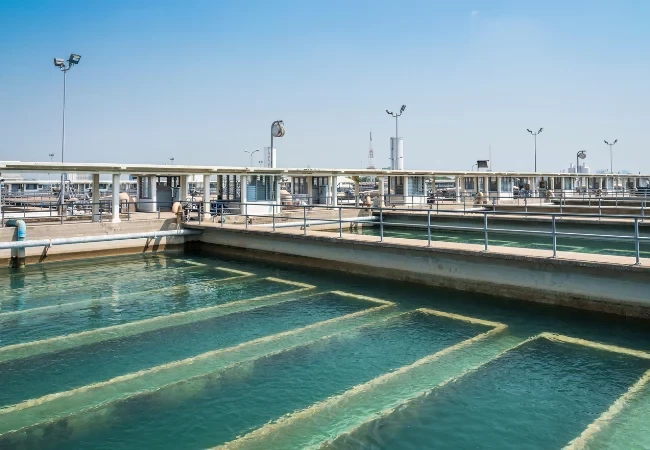Technical Insights and Innovations in Multi-Parameter Analyzers
In the area of water quality monitoring, online multi-parameter analyzers stand at the forefront of technological advancements. These sophisticated instruments combine cutting-edge technologies and innovative features to enhance performance and reliability. In this blog, we’ll delve into the technical aspects and latest innovations that make these analyzers essential for effective water management.
Multi-Parameter Analyzers
Advanced Sensor Technology
At the core of online multi-parameter analyzers are advanced sensors designed to measure various water quality parameters with high precision. Here are some key sensors commonly used:
- pH Sensors: Utilizing glass electrodes and reference cells, these sensors measure the hydrogen ion concentration in water, providing critical insights into its acidity or alkalinity.
- Dissolved Oxygen Sensors: These sensors employ optical or electrochemical methods to determine the concentration of oxygen dissolved in the water, which is vital for assessing aquatic ecosystem health.
- Turbidity Sensors: Using light scattering principles, turbidity sensors measure water clarity, indicating the presence of suspended particles.
- Conductivity Sensors: These sensors gauge the water's ability to conduct electrical current, correlating with ion concentration and overall water purity.
Integrated Multi-Parameter Measurement
One of the standout innovations in online multi-parameter analyzers is the integration of multiple sensors into a single unit. This allows for simultaneous measurement of various parameters, providing a comprehensive, real-time view of water quality. The integration simplifies installation and maintenance by reducing the need for multiple instruments.
Robust Data Management and Connectivity
Modern analyzers are equipped with advanced data management and connectivity features that enhance their functionality:
- Real-Time Data Transmission: These analyzers transmit data in real time to centralized monitoring systems, enabling remote access and analysis of water quality information.
- Cloud Connectivity: Many systems are now compatible with cloud-based platforms, allowing for secure data storage, remote access, and advanced analytics.
- Automated Alerts and Notifications: Programmable alerts can notify operators via SMS, email, or mobile apps when parameters exceed predefined thresholds, ensuring prompt responses to potential issues.
Self-Cleaning and Calibration Features
To maintain accuracy and reliability, many online multi-parameter analyzers include self-cleaning mechanisms and automated calibration routines:
- Self-Cleaning Sensors: Some models feature automatic cleaning systems, such as mechanical wipers or chemical cleaning agents, to prevent fouling and ensure consistent sensor performance.
- Automated Calibration: These analyzers can perform regular self-calibration using built-in reference standards, reducing the need for manual calibration and minimizing maintenance efforts.
Energy Efficiency and Sustainability
Innovations in energy-efficient design contribute significantly to the sustainability of online multi-parameter analyzers:
- Low Power Consumption: Advanced analyzers are designed to operate with minimal energy, making them suitable for deployment in remote locations with limited power availability.
- Solar Power Integration: Some systems come equipped with solar panels, providing a sustainable and off-grid power solution for continuous monitoring.
Enhanced Durability and Reliability
To withstand harsh environmental conditions, online multi-parameter analyzers are constructed with durable materials:
- Rugged Enclosures: These analyzers often feature weatherproof and corrosion-resistant housings to protect sensitive electronics and sensors from environmental damage.
- Wide Temperature Range Operation: Designed to function reliably across a broad temperature range, these instruments ensure accurate measurements in diverse climatic conditions.
User-Friendly Interfaces and Software
Finally, user-friendly interfaces and sophisticated software enhance the usability of online multi-parameter analyzers:
- Intuitive Displays: Touchscreen interfaces and graphical displays make it easy for operators to interact with the analyzer and access real-time data.
- Advanced Software Analytics: Built-in software provides advanced data analysis, trend visualization, and reporting capabilities, enabling users to make informed decisions based on comprehensive water quality data.
Related Blog Post:
How Multi-Parameter Analyzers Elevate Wastewater Management StandardsConclusion
Online multi-parameter analyzers are revolutionizing the way we monitor water quality, thanks to their advanced technologies and innovative features. From precise sensor technology to robust data management and user-friendly interfaces, these instruments are essential tools for ensuring sustainable water management. As technology continues to evolve, we can expect even more advancements that will enhance the performance and reliability of these critical systems.
In a nutshell, online multi-parameter analyzers play a vital role in sustainable water management. Adopting such water treatment practices is essential to achieve economic, social, and environmental sustainability. Leading water treatment plant manufacturers like Alantech offer expert industrial water treatment solutions, focusing on sustainable wastewater management. With years of experience, we offer innovative technologies and partner with clients across various sectors.


